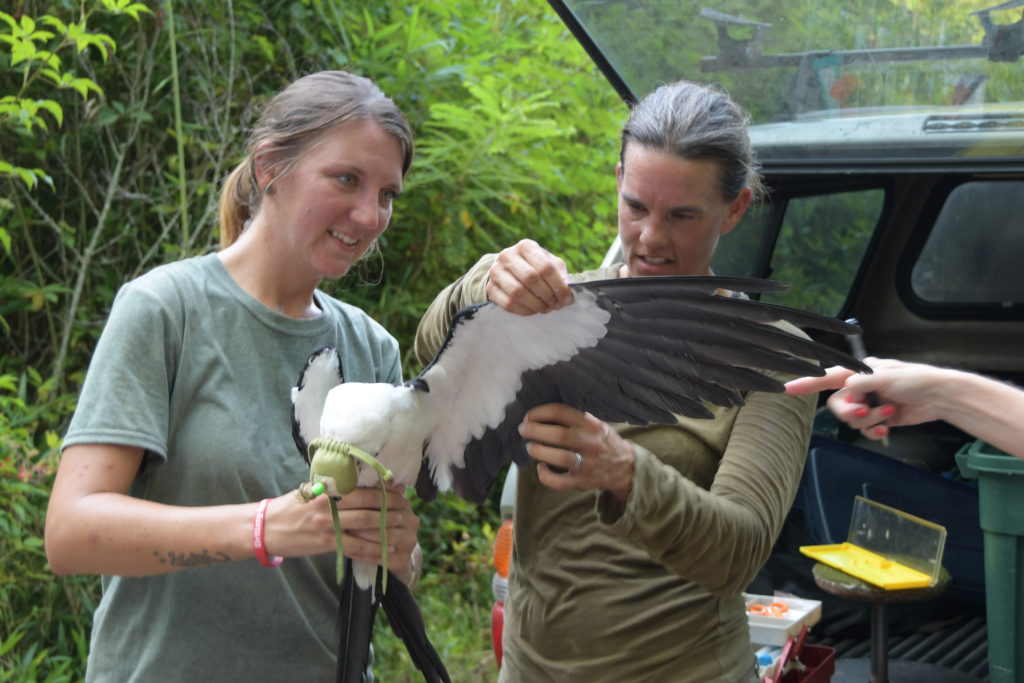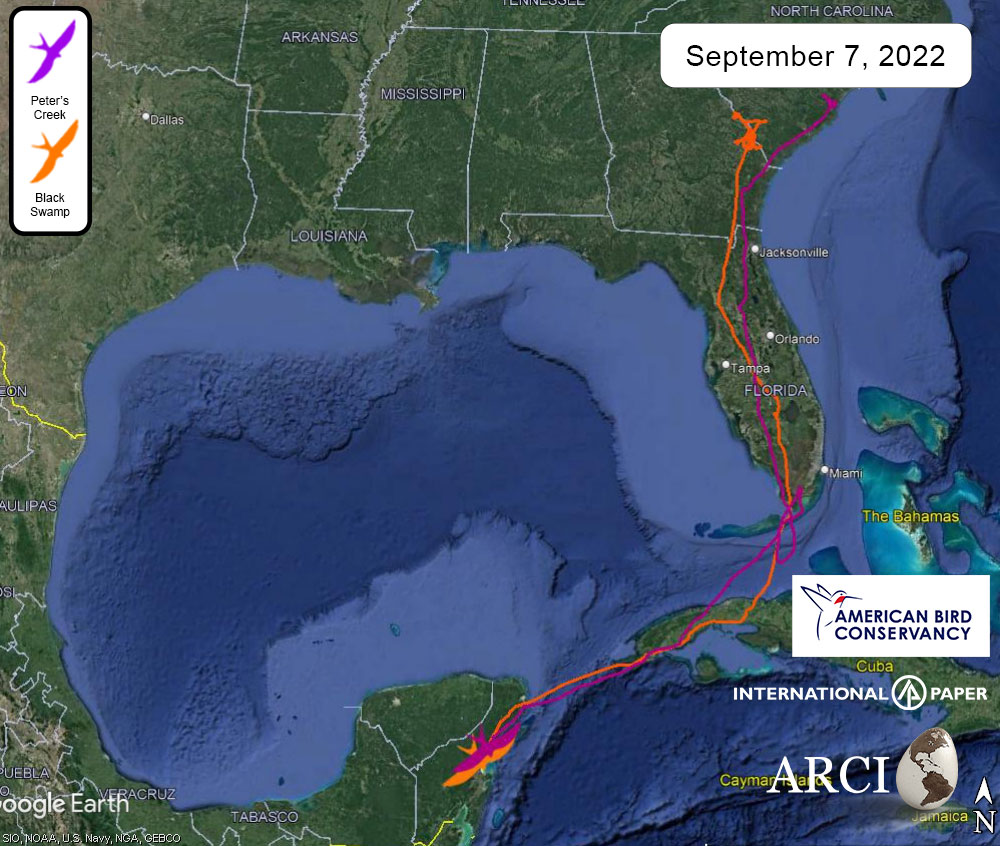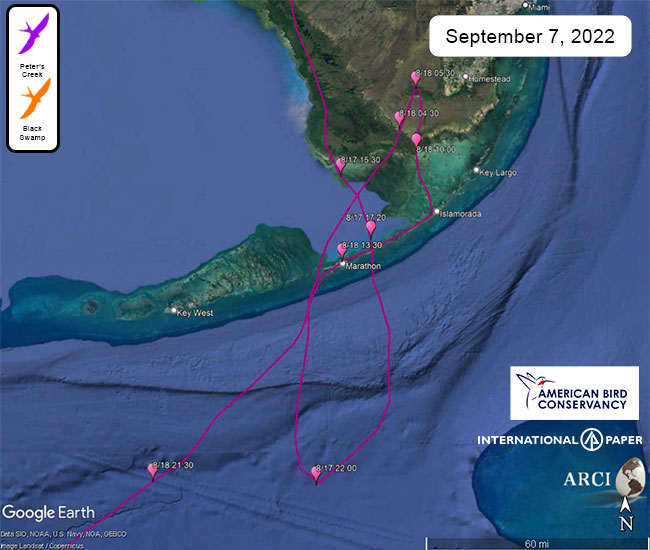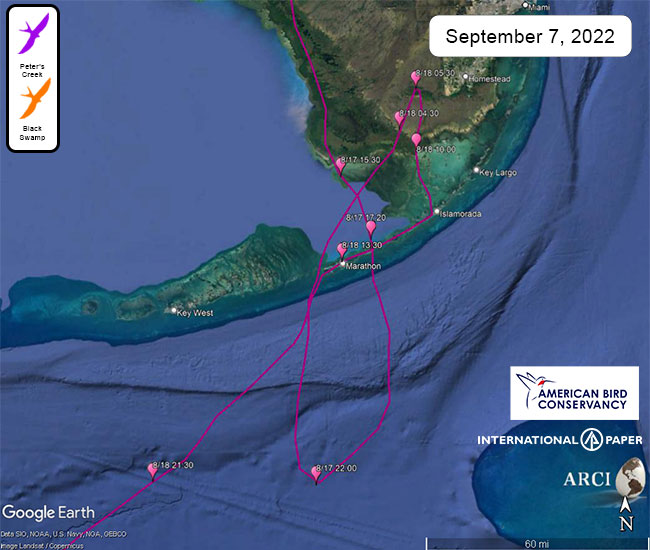In July we introduced you to the two Swallow-tailed Kites from South Carolina that we are tracking in collaboration with International Paper and the American Bird Conservancy. Both birds spent pre-migration in South Carolina and Georgia on big rivers like the Black, Mingo, Waccamaw, and Savannah.


Black Swamp, named for one of the natural land features in the area, remained close to the nest area for a couple of weeks and then traveled north, roosting along the Savannah River and feeding on insects over farm and fallow fields between White Hill and Augusta, Georgia where she remained until 13 August. Black Swamp has now departed the working forests she used to nest and raise her young and traveled through Georgia to Florida. Her last night in Florida was on Cape Sable in the Everglades. On 17 August, she left the Everglades, (crossing Marathon Key between 11:15 and 12:00 for those keep up with the Florida Keys Hawkwatch) and flew to Cuba for the night before continuing to the Yucatán Peninsula the next day.
Peter’s Creek stayed near his summer range north of Georgetown, South Carolina, through the pre-migration period. He was one day behind Black Swamp on his southbound track. He spent the night of 15 August on the Altamaha River in Georgia before making his way into Florida. On 16 August, he too roosted on Cape Sable (west of Black Swamp). August 17, he flew south over Duck Key around 5pm continuing across the Straits of Florida for 60 miles. However, he changed his southbound trajectory (probably due to an abrupt change in the wind) and looped back- in the dark- over the 7-mile bridge (between Marathon and the lower Keys) and returned to the Everglades! The morning of 18 August, after a good rest, he repeated his previous track, flying to Islamorada, following the Florida Keys (passing Marathon and the Hawkwatch at 1:30pm), and turned south over water at Boot Key and flew directly to Cuba. He spent one night in Cuba before crossing the Gulf from the Guanahacabibes Peninsula to Cancun.

Both kites slowed down in Quintana Roo for a week or so. Often kites take a “stopover” to feed and rest after the long over water crossing.
The nature of this kind of cell phone/tower technology is touchy. Sometimes we don’t get a data upload for days, weeks, or months because they are too far from cell phone towers to upload their data. Sometimes their tracking units are not compatible with the types of available towers (3G, 5G, LTE etc.). We are hoping for some luck that they will be near compatible towers, and we can continue to follow them all south!
Thank you to our great and wonderful collaborators and to you, reader, for your admiration of Swallow-tailed Kites.


Such a joy to be able to follow the progress of the STK birds. Will be waiting for other updates from Naples/Sanibel area.
Thanks Ms. Goodspeed, we are grateful that they all made it safe across the Gulf of Mexico!